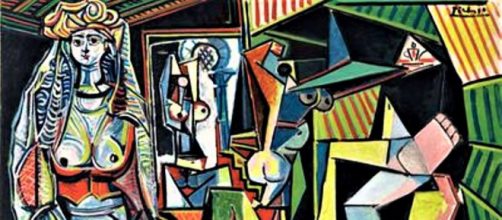This may be a case of too many cooks in the kitchen.
Not one, but two curators organized Brooklyn Museum’s new show “Pablo-matic: Picasso According to Hannah Gadsby,” which may account for the show’s double vision. (More about that in a moment).
Art News magazine’s headline didn’t mince words: “Hannah Gadsby’s Disastrous ‘Pablo-matic’ Show at the Brooklyn Museum Has Some ‘Pablo-ms’ of Its Own.”
This year marks the 50th anniversary of Picasso’s death, but Gadsby’s opus is hardly a commemoration. Her audio guide for the exhibit indicates a feminist angle and through that lens, he looks bad.
Gadsby calls Picasso a “monumentally misogynistic domestic authoritative dictator” who “takes up too much space.” In other words, we pay his work too much attention.
But wait, since when does an artist’s lousy personality make his work lousy? Doesn’t Gadsby paint Picasso with too wide a brush? Brooklyn Museum doesn’t think so, quoting her on its website this way:
Female complaint
“You can have all the perspectives at once” [a reference to Picasso’s invention of Cubism] “What a hero. But tell me, are any of those perspectives a woman’s? Well, then I’m not interested.”
You may remember Gadsby’s thinking from her Netflix special “Nanette” in 2018 saying that Picasso’s Cubism [imagery free of a single perspective], allowed him to “basically just put a kaleidoscope filter on his penis.”
Of course, you don’t have to be a flaming feminist like Gadsby to talk like that.
Art critic Robert Hughes had said in his 1991 book “History of Modern Art,” that Picasso was “a walking scrotum.”
But the show’s focus fogs up when it veers from a feminist’s view of Picasso to female artists’ view of racism in his work owing to his unblushing rip-off of African art without concurrent respect for African people.
By way of example, the show offers Faith Ringgold’s “Jo Baker’s Birthday” which describes the celebrated black singer posed like the Odalisque in Picasso’s “Women of Algiers.”
Except, instead of picturing an Odalisque as a slave to some Turkish sultan, Ringgold shows Baker reclining relaxed and free. And because this image is patterned after European art appropriating African art, it also mocks it for the appropriation.
What this exhibit seems to say, then, is that not only was Picasso a sexist, but he was also a colonialist. Two different subjects, each too big to mush together.
Re-writing history
What’s more, looking at the art of the 20th century through the 21st-century experience is a form of re-writing history. Picasso was sexist, yes; but even though feminism had been around since the 19th century, it didn’t reach its peak until the 1960s. His sexist works were painted before that.
And if a museum is going to mount a show about Picasso’s misogyny, shouldn’t it do more than quote an angry feminist? Shouldn’t it attempt to enlighten the viewer with some context? Picasso didn’t invent gender discrimination.
Consider the ancient Greek myth about the first woman – Mother Earth – who instructed her son to castrate his father and toss the genitals into the sea, out of which came Venus, goddess of love.
Silly story, right? Freud didn’t think so. He seemed to have based psychoanalytic theory on it, saying that men fear women because they fear castration. How else to explain Picasso’s painting “Women with Stiletto”?
Did that fear drive Picasso’s ways and means with women? Shouldn’t the Brooklyn Museum do more than mow him down with Gadsby’s diatribe? She even lambasted “Guernica.”
In her audio guide, she said: “If it’s a powerful raw, and devasting anti-war statement you are after, I would recommend reading Anne Frank’s diary.” Why, Hannah, because she was female, and Pablo wasn’t?


